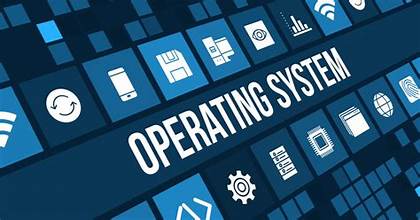
Read-Only Memory (ROM)
Introduction to ROM:
Read-Only Memory (ROM) is a type of non-volatile memory that is used primarily in computers and other electronic devices to store permanent or semi-permanent data. Unlike Random Access Memory (RAM), ROM retains its contents even when the power is turned off. It is called “read-only” because, in most cases, the data stored in ROM cannot be modified after it is manufactured.
Types of ROM:
- Mask ROM (MROM): Mask ROM is manufactured with data already stored in it during the production process. It is called “mask” ROM because the data is permanently encoded onto the chip during the mask production phase. Once manufactured, the data cannot be changed or erased.
- Programmable ROM (PROM): PROM allows users to write data onto the chip after it has been manufactured. However, once programmed, the data cannot be changed or erased. PROM is programmed using a special device called a PROM programmer.
- Erasable Programmable ROM (EPROM): EPROM allows users to erase and reprogram the data stored on the chip multiple times. It uses a quartz window on the chip that allows ultraviolet (UV) light to erase the data. EPROM chips are commonly used for firmware and BIOS in computers and other electronic devices.
- Electrically Erasable Programmable ROM (EEPROM): EEPROM, also known as Flash memory, can be erased and reprogrammed electrically, without the need for UV light. EEPROM is widely used in USB flash drives, memory cards, solid-state drives (SSDs), and other electronic devices where data needs to be updated or rewritten frequently.
- Flash Memory: Flash memory is a type of EEPROM that can erase and reprogram large blocks of data at once. It is faster and more durable than traditional EEPROM and is commonly used in consumer electronics, such as smartphones, tablets, digital cameras, and portable media players.
Applications of ROM:
ROM is used in a wide range of electronic devices and applications, including:
- Firmware: ROM is used to store firmware, which is low-level software that controls the basic functions of hardware components in electronic devices, such as BIOS in computers, firmware in routers and modems, and operating system bootloaders.
- Embedded Systems: ROM is used in embedded systems, such as microcontrollers and IoT devices, to store program code and data that is essential for their operation.
- Gaming Consoles: ROM cartridges are used in gaming consoles, such as Nintendo’s NES and SNES, to store video games and other software.
- Mobile Devices: Flash memory, a type of EEPROM, is used in mobile devices, such as smartphones and tablets, to store the operating system, apps, and user data.
- Automotive Electronics: ROM is used in automotive electronics, such as engine control units (ECUs) and infotainment systems, to store program code and calibration data.
Advantages of ROM:
- Non-Volatile: ROM retains its data even when the power is turned off, making it suitable for storing permanent or semi-permanent data.
- Reliability: ROM is more reliable than volatile memory, such as RAM, because it is not susceptible to data loss due to power failure or system crashes.
- Security: Since the data stored in ROM cannot be easily modified or tampered with, ROM provides a level of security against unauthorized access and tampering.
Disadvantages of ROM:
- Limited Write Capability: Some types of ROM, such as PROM and Mask ROM, have limited or no write capability, making it difficult to update or modify the data stored on the chip.
- Cost: ROM chips can be more expensive to manufacture than other types of memory, especially if they require specialized production processes, such as mask ROM.
- Limited Storage Capacity: ROM chips typically have smaller storage capacities compared to other types of memory, such as hard drives and SSDs, which limits their usefulness for storing large amounts of data.
Conclusion:
Read-Only Memory (ROM) is an essential component of modern electronic devices, providing permanent or semi-permanent storage for firmware, program code, and data. With various types of ROM available, including Mask ROM, PROM, EPROM, EEPROM, and Flash memory, designers can choose the most suitable type for their specific application requirements. Despite its limitations, ROM remains a critical technology in the field of computing and electronics, providing reliability, security, and non-volatile storage capabilities.




